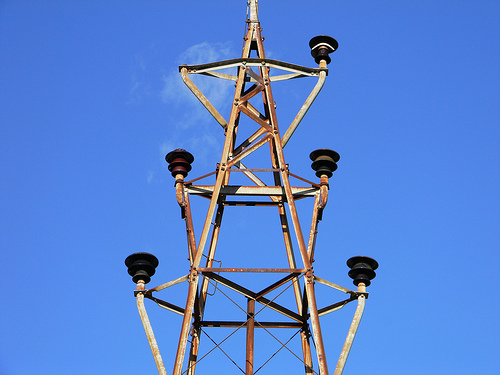Investors’ love affair with high-dividend utilities stocks waned last year as U.S. Treasury yields rose, and the sector could underperform again in 2014 if the economy continues to improve.
Utilities have performed well overall during the past decade as interest rates declined, and some investors have viewed the companies as an alternative to bonds because of their stability and dividends.
“Now an inflection point looms,” says Morningstar analyst Robert Goldsborough. Starting in the middle of 2013, “utilities companies’ stock prices went into a tailspin and utilities companies’ valuations compressed as investors began to become spooked about sharply higher Treasury rates,” the analyst notes. “Utilities have a long history of underperforming the broader market when interest rates rise.”
The chart below shows the relative performance of a utilities sector ETF versus the S&P 500. Utilities lagged the overall market badly during the second half of 2013 — when the chart is falling, it means utilities are trailing the S&P 500.
Chart source: StockCharts
Utilities stocks handily outperformed the S&P 500 in 2011, but have trailed the market the past two calendar years by a wide margin.
Some investors expect the trend to continue to 2014, as the cost of hedging against losses in utilities stocks has climbed to the highest level in five years.
“Sentiment toward utilities is negative,” Tim Hoyle, director of research at Haverford Investments, tells Bloomberg News. “We’re in a rising rate environment and utilities, which are often seen as an alternative to fixed income, become relatively unattractive.”
The yield on the 10-year Treasury note recently climbed above 3% after the Federal Reserve said it would begin tapering its monthly bond purchases by $10 billion to $75 billion.
Gregg Giboney, who manages the Dividend and Growth portfolio on Covestor, said a number of factors are weighing on utilities.
First, the sector became overvalued after the financial crisis as investors gravitated to utilities for stability and income.
“Now, the economic recovery is looking more sustainable and investors are moving out onto the risk spectrum into more cyclical stocks,” the portfolio manager said. For example, of the nine major S&P 500 sector ETFs, Consumer Discretionary Select Sector SPDR (XLY) was the best performer in 2013 with a total return of more than 40%. Utilities were the worst sector by far.
Giboney added that utilities are also facing a tough regulatory landscape with environmental restrictions and targeted rates of return set by the government. He does own Duke Energy (DUK) and Dominion Resources (D) in his Dividend and Growth portfolio, but has less than 4% of the portfolio in utilities.
“I run a dividend strategy but I don’t have a lot in utilities because I’m sensitive to the sector’s valuations, and I see better opportunities in other areas of the market,” Giboney said. In particular, he has decent position in the financials sector, including banks Wells Fargo (WFC) and PNC Financial Services Group (PNC).
“The banks are well-capitalized and they’re figuring out the new regulatory environment after the financial crisis,” he said. “Credit costs are not severe, the economy is picking up and bank stocks can have a decent 2014 if the credit curve steepens.”
Scott Rothbort, who manages the High Dividend Low Volatility portfolio on Covestor, says he has lightened up his utilities sector exposure recently.
“Utilities tend to do better when you don’t have big moves to the upside in the stock market. These are more widow-and-orphan stocks. Now, investors are putting money into the market and chasing stocks with more momentum and growth, while utilities are seen as more boring and staid.”
If Treasury yields keep migrating upwards, he expects more selling of utilities as income investors move into bonds.
“However, if we do see a flight to ‘safety stocks’ in 2014, that could create a bid for utilities,” Rothbort said.
Photo Credit: jeffkraem
DISCLAIMER: The investments discussed are held in client accounts as of December 31, 2013. These investments may or may not be currently held in client accounts. The reader should not assume that any investments identified were or will be profitable or that any investment recommendations or investment decisions we make in the future will be profitable. Dividends reflect past performance and there is no guarantee they will continue to be paid. Past performance is no guarantee of future results.





